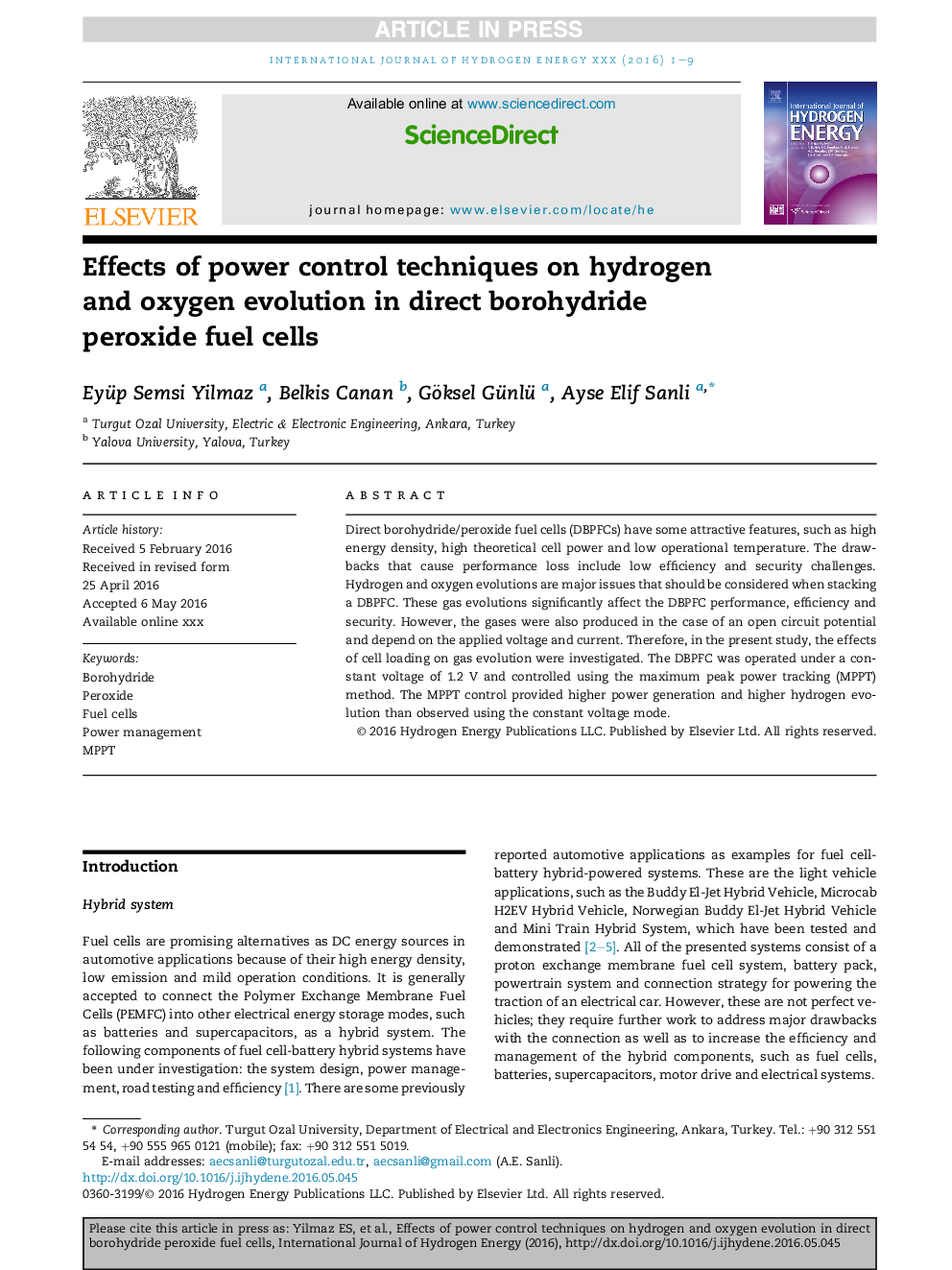| Article ID | Journal | Published Year | Pages | File Type |
|---|---|---|---|---|
| 5146559 | International Journal of Hydrogen Energy | 2017 | 9 Pages |
Abstract
Direct borohydride/peroxide fuel cells (DBPFCs) have some attractive features, such as high energy density, high theoretical cell power and low operational temperature. The drawbacks that cause performance loss include low efficiency and security challenges. Hydrogen and oxygen evolutions are major issues that should be considered when stacking a DBPFC. These gas evolutions significantly affect the DBPFC performance, efficiency and security. However, the gases were also produced in the case of an open circuit potential and depend on the applied voltage and current. Therefore, in the present study, the effects of cell loading on gas evolution were investigated. The DBPFC was operated under a constant voltage of 1.2Â V and controlled using the maximum peak power tracking (MPPT) method. The MPPT control provided higher power generation and higher hydrogen evolution than observed using the constant voltage mode.
Related Topics
Physical Sciences and Engineering
Chemistry
Electrochemistry
Authors
Eyüp Semsi Yilmaz, Belkis Canan, Göksel Günlü, Ayse Elif Sanli,
